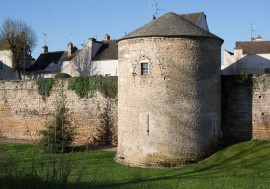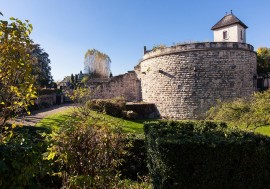
1
Louis XI wanted a fortress built here both to defend Beaune and to keep a watch on its inhabitants, who had shown themselves faithful to Marie, the daughter of Charles The Bold. Its construction began in 1482 and ended in 1527.
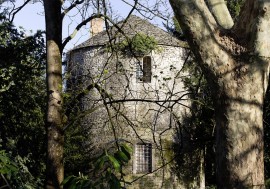
2
Built between 1465 and 1477 the tower is pierced by loopholes (i.e. arrowslits) and topped by a domed roof of lava slabs. On 10 October 1888 it witnessed President Sadi Carnot's triumphal arrival at Beaune railway station.
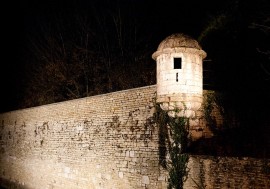
3
Built during the Thirty Years' War (1637) this stronghold, like Tour Renard, formed part of the eastern defences. It enabled a direct line-of-sight watch over the Route de Seurre and threats coming from the plain.
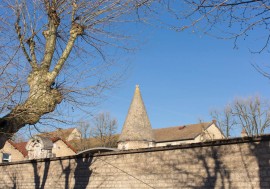
4
A watchtower, built at the end of the 14th century, it was used to store the ingredients for making gunpowder. Only its top can be seen from the Chemin de Ronde.
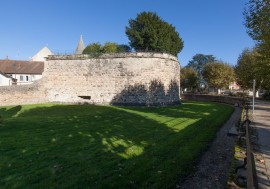
5
One of the four towers built in the early 16th century, it is decorated on the boulevard side with the coat of arms of the governor of Burgundy, La Trémouille. It played a role in monitoring the plain.
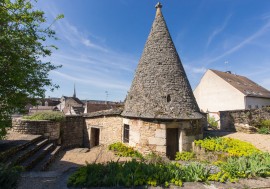
6
A watchtower, built at the end of the 14th century, it is enclosed within the Grosse Tour. The wood (billets) used for defence were stored here. It overlooks the former postern-gate, or Porte Belvent.
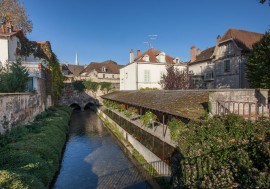
7
The Saint-Jacques wash-house was built in 1887 at the foot of the ramparts, where the Bouzaize resurfaces after its mysterious passage under the Hôtel-Dieu. Many washer-women used it.
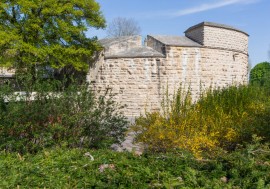
8
This is one of the four large towers built in the early 16th century. It was part of the Cordeliers monastery, whose church was unfortunately partly torn down to make room for Rue de l’Hôtel-Dieu.
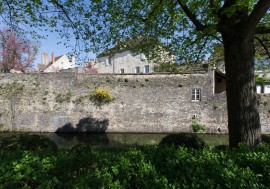
9
Bastion Bretonnière, whose construction began in 1637, bears the name of the governor of Burgundy. In 1656, the Bretonnière district cheered the ceremonial entry of Queen Christina of Sweden.
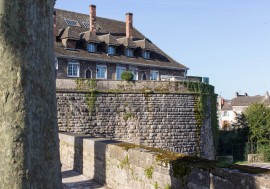
10
This is one of the four towers built in the early 16th century. Its wall is 7m thick. It gets its name from the Dames du Lieu-Dieu, nuns of the Cistercian abbey installed just behind the walls.
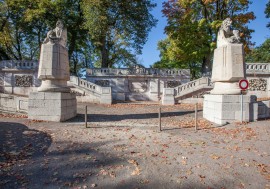
11
Built during the Thirty Years' War (1637), it was opened up and transformed into a promenade by the Mayor, Mr. Maufoux, in 1765. It was named the Square des Lions because of the two statues of lions that guard the entrance.
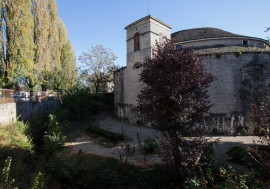
12
Its 7-metre-thick wall withstood the new iron cannonballs. The tower's two names reveal the twin faces of this area, with its 'ladies of the night' and the College des Oratoriens.
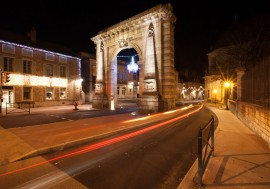
13
This old fortified gate with drawbridge witnessed the entry of many important personalities. From 1770, visitors from the north were greeted at an impressive new gate, part of the city modernisation program of the Mayor, Mr. Maufoux.
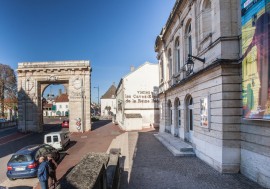
14
Built in 1569, this bastion was torn down in about 1800 to make space for a public dance-hall, the Vauxhall. This was open until 1860 when, having become dilapidated, it was replaced by a magnificent Italian-style theatre.
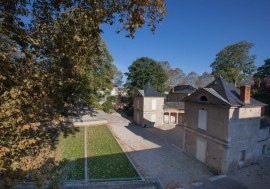
15
At the same time as the construction of the Vauxhall, on the site of the former Bastion Saint-Nicolas, the city authorised the construction of bathing/showering facilities in the moat of the Rempart de la Comédie.
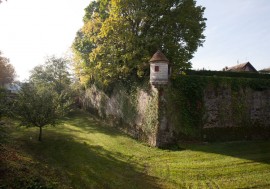
16
Built during the Thirty Years' War (1637), it encloses the small 14th-century Tour Notre Dame. In its angle, on the boulevard side, a watch-turret, covered by a domed roof of stone, dominates the moat.
















